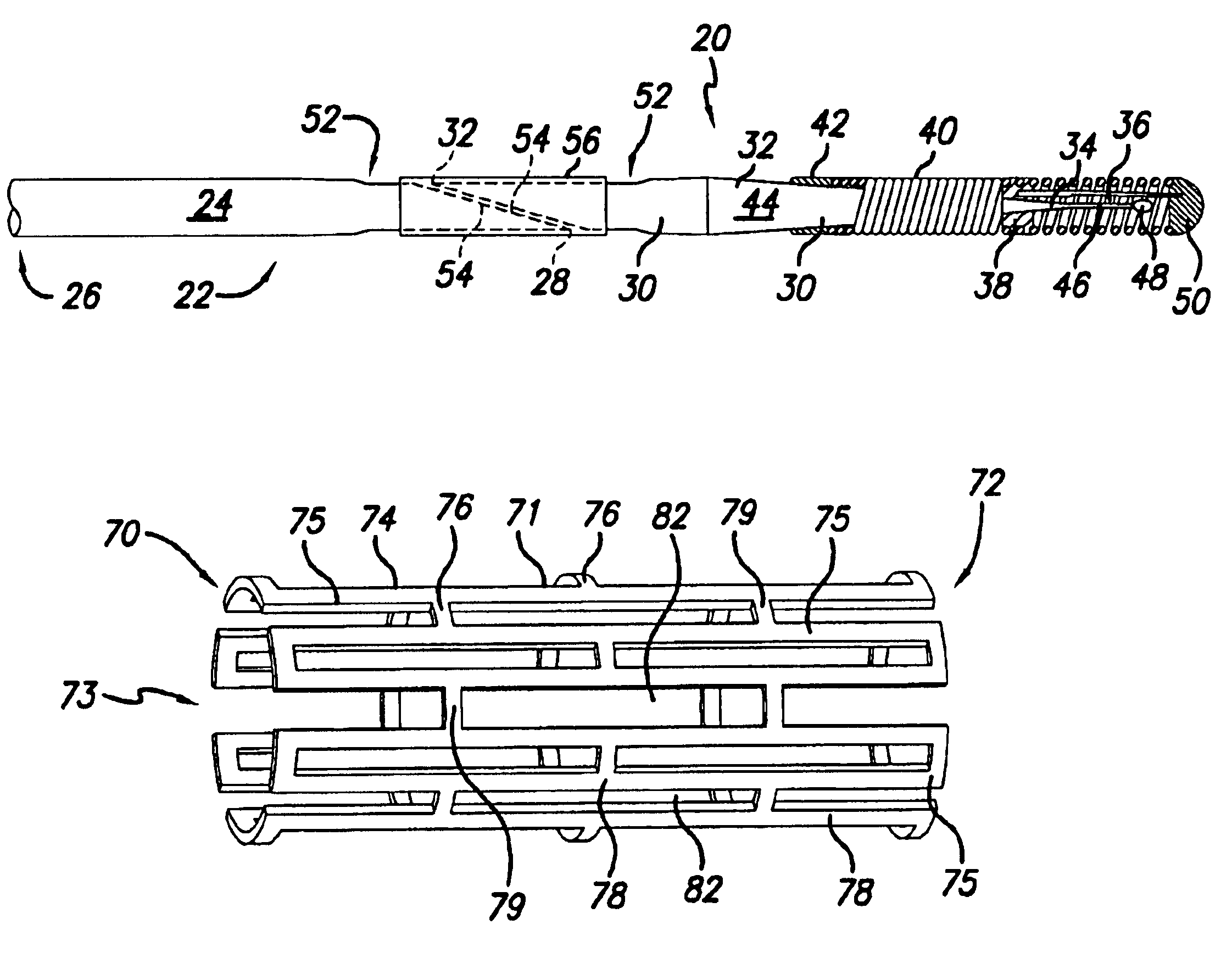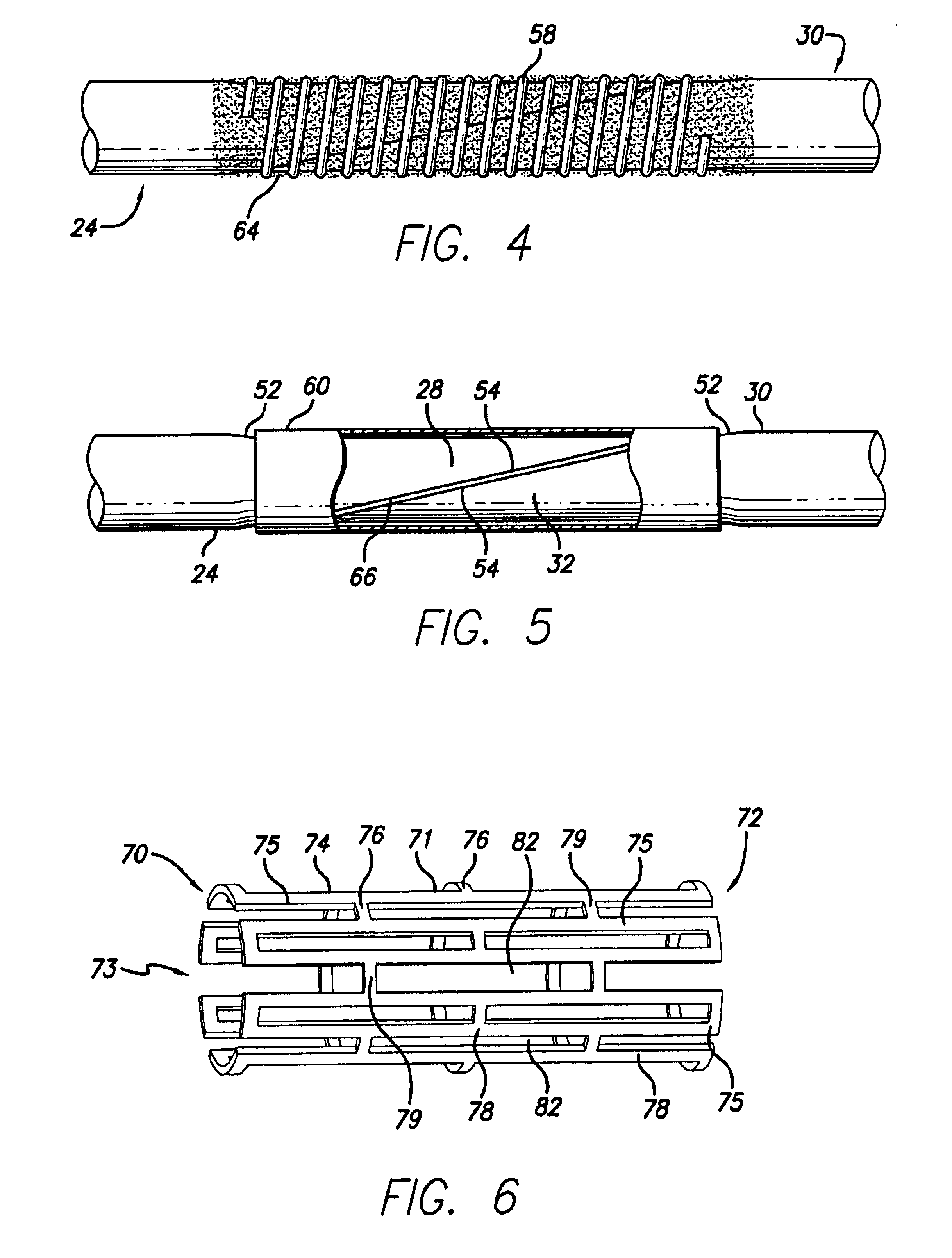Enhanced method for joining two core wires
a core wire and core wire technology, applied in the direction of guide wires, catheters, diagnostic recording/measuring, etc., can solve the problems of high cost of nitinol hypotubes or connecting tubes, and achieve the effect of small or no stiffness and sufficient column strength
- Summary
- Abstract
- Description
- Claims
- Application Information
AI Technical Summary
Benefits of technology
Problems solved by technology
Method used
Image
Examples
Embodiment Construction
The present invention is directed to a guide wire that uses at least two core materials that are joined at an interface. FIG. 1 illustrates in a side elevational view one embodiment of the present invention guide wire, generally designated 20, that is adapted for insertion into a patient's body lumen, such as an artery or vein. In this embodiment, the intravascular guide wire 20 has at least two core materials joined or secured together. In particular, the guide wire 20 has a core 22 with a proximal core section 24 having a proximal end 26 and a distal end 28, and a distal core section 30 having a proximal end 32 and a distal end 34. It is preferred that the proximal core section 24 is made of stainless steel, and the distal core section 30 is made of nitinol. However, the core sections may be made out of any material known in the guide wire art.
In the embodiment as shown in FIG. 1, the guide wire 20 also includes a shapeable member 36 which can be secured to the distal core section...
PUM
| Property | Measurement | Unit |
|---|---|---|
| diameter | aaaaa | aaaaa |
| outer diameter | aaaaa | aaaaa |
| outer diameter | aaaaa | aaaaa |
Abstract
Description
Claims
Application Information
 Login to View More
Login to View More - R&D
- Intellectual Property
- Life Sciences
- Materials
- Tech Scout
- Unparalleled Data Quality
- Higher Quality Content
- 60% Fewer Hallucinations
Browse by: Latest US Patents, China's latest patents, Technical Efficacy Thesaurus, Application Domain, Technology Topic, Popular Technical Reports.
© 2025 PatSnap. All rights reserved.Legal|Privacy policy|Modern Slavery Act Transparency Statement|Sitemap|About US| Contact US: help@patsnap.com



